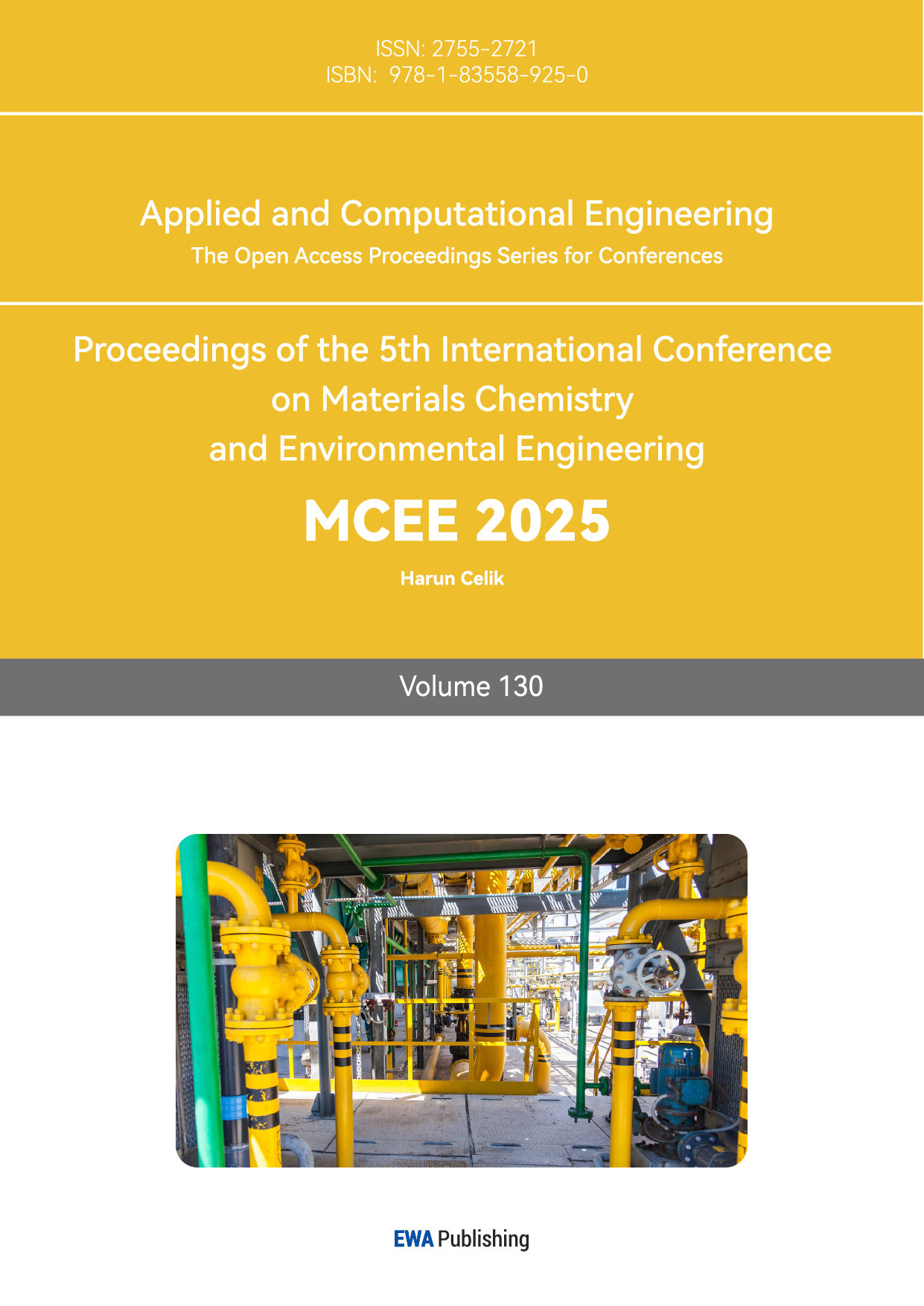1. Introduction
With the rapid development of the global aviation industry, aircraft noise problems have gradually attracted widespread attention from society. The noise generated by aircraft during takeoff, cruise and landing has a significant impact on surrounding communities and the environment. Aviation noise has negative impacts on human health in a variety of ways, such as annoyance, cognitive impairment, sleep disturbance, cardiovascular disease, etc. [1] According to research, aircraft may also pose potential threats to the ecological environment, including habitat destruction and behavioral changes in wild animals [2]. Therefore, aviation noise control has become one of the important issues for the sustainable development of the aviation industry. To reduce these impacts, countries and international organizations are taking a variety of measures, including developing new low-noise technologies, optimizing airport operations, and enacting stricter noise management regulations.
In this paper, an outlook of different type of aircraft noise and existing technologies for reducing noise will be introduced. The research will analyse the main sources of aircraft noise, including engine noise and airframe noise, and explore each noise type in detail, highlighting the respective characteristics and currents status in noise reduction technology.
2. Two main sources of aircraft noise
2.1. Airframe noise
Airframe noise refers to the noise generated by the interaction between the structural components of the aircraft and the airflow during the flight. Airframe noise mainly occurs in the non-powered part of the aircraft, especially when the aircraft takes off and lands or flies at low speed. The main sources of airframe noise include wings, tail, landing gear, flaps and spoilers[3].
Airframe noise is caused by the complex aerodynamic interaction between the aircraft and the atmosphere [3]. When air bypasses these structural components, vortices and turbulence are generated, and these aerodynamic phenomena cause noise. This noise is particularly obvious when the aircraft is approaching landing, because after the landing gear and flaps are deployed, the disturbance of the air is increased, generating greater noise (see figure1).
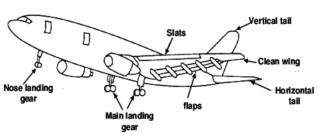
Figure 1: Airframe noise sources [4].
The landing gear is one of the main sources of noise, especially during the landing phase. When the aircraft lands, the deployment of the landing gear increases the contact area between the aircraft and the air, resulting in turbulence and air vortices [5]. The landing gear structure is usually complex, including tires, struts and brake systems, which form complex vortex areas in the airflow, resulting in obvious aerodynamic noise. Landing gear noise is the low-frequency turbulent noise formed when the airflow bypasses the exposed structure. The intensity and noise of the vortex depend on the design and size of the landing gear and the air flow speed. Modern aircraft use streamlined landing gear fairings to reduce aerodynamic interference, but noise problems still exist, especially at lower flight speeds.
Wing noise is primarily caused by the interaction of the wing with the air, especially when the aircraft is lowering altitude or preparing to land. When the aircraft lowers flaps or spoilers to increase lift, these parts on the wing induce turbulence, which leads to increased noise. Flaps and slats are important aerodynamic control surfaces on the wing, which are used to increase the lift of the wing during takeoff and landing. However, the deployment of flaps and slats not only changes the direction of the airflow, but also causes air turbulence, thereby generating noise.
Flaps are movable parts located on the trailing edge of the wing, which are usually deployed during takeoff and landing. The turbulence and pressure differences created by flaps in the airflow cause noise. Larger angles of flap deployment increase noise because more air flows around and creates vortices. Slats are located on the leading edge of the wing and are used to increase the lift of the aircraft at low speeds. When the aircraft is flying at lower speeds, the deployment of slats changes the aerodynamic characteristics of the wing, making the airflow more complex, generating turbulence and noise. The shape and position of the slats both affect the noise level.
2.2. Engine noise
Aircraft engine noise is one of the main sources of aviation noise, especially during the critical stages of takeoff and landing, where engine noise accounts for the majority of the total aircraft noise. Engine noise is produced by the sound of the engine's moving parts and the sound of the air being discharged at high speeds. Most engine noise comes from the exhaust or jets behind the engine as they mix with the surrounding air [3]. With the rapid development of the aviation industry, engine noise control has become one of the important issues for environmental protection and community comfort. Although modern jet engines, especially high-bypass ratio turbofan engines, have made significant progress in fuel efficiency and thrust, noise issues remain an urgent challenge in aviation design.
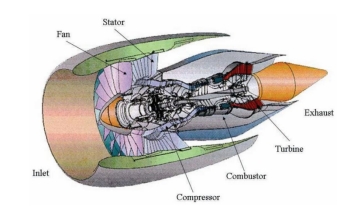
Figure 2: Dominant engine noise sources [6].
Jet noise is one of the main components of aircraft engine noise, especially in turbojet engines and low bypass ratio turbofan engines. This noise is generated by the strong turbulent interaction between the high-speed exhaust gas and the relatively still air around it. The higher the jet flow rate, the stronger the turbulence generated by the air flow shear layer, and the noise increases accordingly. Jet noise is most obvious during the takeoff phase of the aircraft, because the engine needs to generate maximum thrust at this time and the jet speed is also at its highest.
Fan noise is a noise source unique to turbofan engines, mainly caused by the interaction between the large-diameter fan blades at the front of the engine and the air during rotation. This noise includes the rotation noise of the fan and the turbulent noise generated by the blades and the airflow. Although high bypass ratio turbofan engines are quieter than low bypass ratio turbofan engines, fan noise is still an important noise source.
Compressor noise comes from the interaction between the compressor blades inside the engine and the air flow. The compressor is the part of the engine that compresses air to high pressure for more efficient combustion. The rotation of the compressor causes turbulence and noise, especially during takeoff and slow flight.
3. Technologies for airframe noise reduction
Unlike engine noise, which originates from the aircraft's powerplants, airframe noise is produced by the non-powered parts of the aircraft as they interact with airflow. As aviation noise pollution becomes a growing concern for environmental regulators and communities surrounding airports, substantial effort has been directed towards the reduction of airframe noise.
3.1. Landing gear noise reduction technologies
The complex and exposed nature of landing gear components such as struts, wheels, and brake systems causes high levels of turbulence when deployed. One of the simplest and most effective ways to reduce landing gear noise is through the use of fairings and shields, which streamline the shape of the landing gear to minimize airflow disruption. Fairings are aerodynamic covers that smooth out the otherwise rough and noisy geometry of the landing gear. These structures help reduce turbulent airflow and create a more smooth flow around the gear components, which in turn reduces the noise generated by turbulence.
The addition of noise-absorbing liners to landing gear bays and wheel wells helps capture and dampen noise before it propagates outside the aircraft. These liners can be made from specialized acoustic materials that absorb a wide range of sound frequencies, reducing the noise impact as the landing gear is deployed.
Some modern aircraft, such as the Boeing 787 Dreamliner, have integrated quieter landing gear designs, which incorporate more aerodynamic shapes, optimized wheel covers, and gear positioning to reduce noise [7]. Future landing gear concepts may include fully retractable fairings or innovative deployment mechanisms that minimize exposure to airflow during landing and takeoff.
3.2. High-lift device noise reduction
High-lift devices extend to modify the wing shape, improving lift but also disrupting airflow. Slats, which are small airfoils located at the leading edge of the wing, create a gap between the slat and the wing surface when deployed. This gap allows air to flow through, generating turbulent noise. Slat-cove fillers are used to reduce or eliminate this gap, smoothing the airflow and consequently lowering noise levels. These fillers can be either rigid or inflatable, designed to only fill the gap during high-lift phases.
The trailing edge of high-lift devices, such as flaps, can be fitted with flexible materials to smooth out the turbulent airflow that occurs when they are deployed. By reducing sharp transitions in airflow over these surfaces, noise can be diminished. According to the study of different types of flaps, modern designs feature trailing edges made from adaptive, shape-shifting materials that can dynamically respond to changing flight conditions [8].
The side edges of deployed flaps can produce significant noise due to the vortices that form at the flap-wing junction. By modifying the shape of the flap edges, such as incorporating serrations or small vortex generators, these vortices can be reduced, which in turn reduces noise levels. This technique is similar to methods used for reducing noise at the trailing edges of jet engine nozzles.
3.3. Active Flow Control (AFC)
Active flow control involves the manipulation of airflow over the aircraft surface using actuators, suction devices, or small jets of air to control the behavior of the boundary layer. AFC can be used to delay flow separation, reduce turbulence, and control vortex formation, all of which contribute to noise reduction. This technology is still in the developmental stage but shows great promise for reducing airframe noise in future aircraft designs.
4. Technologies for engine noise reduction
The high-speed airflow, combustion processes, and mechanical components involved in engine operation contribute significantly to the overall noise of an aircraft. With stricter noise regulations and growing environmental concerns, the aviation industry has been exploring innovative technologies to reduce engine noise without compromising performance and efficiency. This paper discusses various technologies and strategies developed to mitigate engine noise, focusing on turbofan engines, which are the most commonly used engine type in modern commercial aviation.
4.1. Fan noise reduction technologies
The fan is the primary source of low-frequency noise during takeoff and landing, making fan noise reduction a key focus in noise mitigation efforts.
Geared turbofan (GTF) engines, utilize a reduction gearbox to allow the fan to rotate at a slower speed than the turbine. This separation of speeds enables the fan to operate more efficiently at lower noise levels. By reducing the rotational speed of the fan, the noise generated by the fan blades interacting with the incoming airflow is significantly reduced. GTF engines also allow for larger fan diameters, which can move more air at lower velocities. Since lower velocity airflow generates less noise, these engines contribute to a substantial reduction in overall engine noise.
Swept fan blades, which are slightly curved or angled back, help reduce noise by controlling the airflow over the blade surface more smoothly. Traditional straight fan blades can cause abrupt airflow disturbances, which increase noise. By sweeping the blades, the interaction between the blades and the airflow becomes more gradual, reducing noise. This design also allows for better aerodynamic performance and fuel efficiency.
Variable pitch fan blades are an advanced technology that allows the angle of the fan blades to be adjusted based on the flight phase. By altering the blade pitch during different phases of flight, the fan can operate more quietly during takeoff and landing. This technology allows for the optimization of airflow while minimizing the noise generated by the fan blades interacting with the air.
4.2. Jet noise reduction technologies
Chevron nozzles are a key innovation in reducing jet noise. These nozzles have serrated or sawtooth edges, which help smooth the mixing of the exhaust jet with the ambient air (see figure 3). The penetration rate of a single V-shaped blade is lower than that of a tabbed nozzle, so the vortex generated is weaker [9]. By reducing the intensity of the turbulence at the jet boundary, chevron nozzles lower the noise generated by the high-velocity exhaust gases. Chevron nozzles are now standard on many modern aircraft.
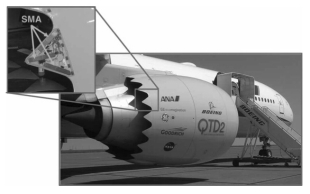
Figure 3: Chevron for Noise Reduction [10].
Moreover, one of the most effective ways to reduce jet noise is by increasing the bypass ratio of the engine. In high-bypass turbofan engines, a significant portion of the air passing through the engine bypasses the combustion chamber, flowing around the core instead of through it. This larger mass of slower-moving air reduces the velocity of the exhaust jet, which in turn lowers the noise generated [11]. High-bypass engines are typically quieter and more fuel-efficient than low-bypass engines, making them a standard feature in modern commercial aviation.
Advanced exhaust mixing technology aims to improve the mixing of the high-speed jet exhaust with the slower ambient air, reducing the noise generated by turbulent interactions. Mixing lobes or mixers are devices placed at the end of the engine exhaust to promote better airflow mixing. [12] These devices help reduce the velocity differential between the exhaust gases and the surrounding air, resulting in quieter jet noise.
4.3. Active Noise Control (ANC) for engines
Active noise control (ANC) systems have been implemented in various industries to cancel out unwanted noise. In the context of aircraft engines, ANC involves using microphones and speakers to detect and generate sound waves that are out of phase with the engine noise (see figure 4). These opposing sound waves cancel out the unwanted noise, reducing the overall sound level.
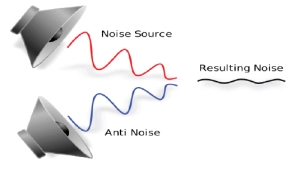
Figure 4: Active Noise Cancellation [9].
While ANC systems for aircraft engines are still in the experimental stage, they hold potential for future noise reduction applications.
5. Conclusion
This paper combines the references to explore aircraft noise reduction technology from two main aspects. Airframe noise reduction is a critical area of focus for aircraft manufacturers and aviation researchers as stricter noise regulations and environmental concerns push the industry toward quieter aircraft. Technologies aimed at reducing landing gear noise, high-lift device noise, and trailing edge noise, among others, are helping to significantly decrease the impact of airframe noise on the environment. And, technologies such as geared turbofans, chevron nozzles, lean-burn combustion, and acoustic liners are just some of the strategies that have been successfully deployed to mitigate engine noise. Each of these technologies addresses different sources of engine noise—whether it is fan, jet, combustion, or turbomachinery noise—leading to quieter, more environmentally friendly aircraft. Future advancements in materials, computational design, and active noise control systems are expected to drive even greater reductions in aircraft engine noise, ensuring that the aviation industry can continue to grow while minimizing its impact on communities and the environment.
In conclusion, both airframe and engine noise reduction methods play crucial roles in mitigating aircraft noise. Airframe modifications tend to focus on aerodynamic enhancements and structural changes, while engine noise reduction primarily targets improvements in engine design and materials. An integrated approach that combines both airframe and engine noise reduction strategies is likely to yield the best results, creating quieter aircraft that meet regulatory requirements and improve community relations.
References
[1]. Civil Aviation Authority (2024) Aviation noise and health. https://www.caa.co.uk/passengers-and-public/environment/noise/aviation-noise-and-health/
[2]. Kunak Technologies S.L. (2024) Air quality at airports, a challenge for health and environment. https://kunakair.com/air-quality-at-airports/
[3]. NoiseLab. https://noiselab.casper.aero/edi/content/2/about-aircraft-noise/
[4]. Serhat Hosder, Joseph Schetz, Bernard Grossman, William Mason. (2004) Airframe Noise Modeling Appropriate for Multidisciplinary Design and Optimization. https://www.researchgate.net/publication/238174991_Airframe_Noise_Modeling_Appropriate_for_Multidisciplinary_Design_and_Optimization
[5]. L. Leylekian, M. Lebrun, P. Lempereur. (2014) An overview of aircraft noise reduction technologies.. Aerospace Lab, 6, p. 1-15. 10.12762/2014.AL07-01 . hal-01184664
[6]. Dennis Huff. (2007) Noise Reduction Technologies for Turbofan Engines. https://ntrs.nasa.gov/api/citations/20080001448
[7]. Palmajs, (2022) Boeing 787 Dreamliner. https://smartencyclopedia.org/content/boeing-787-dreamliner/
[8]. Helicopters & Aircrafts. (2016) HIGH LIFT DEVICES. http://heli-air.net/2016/02/05/high-lift-devices/
[9]. Mojtaba Sadeghian, Mofid Gorji Bandpy. (2020) Technologies for Aircraft Noise Reduction: Review Paper. https://www.longdom.org/open-access/technologies-for-aircraft-noise-reduction-a-review-47567.html
[10]. Aerospace Engineering Blog. (2018) Smart Materials Application: Variable Geometry Chevron for Noise Reduction. https://aerospaceengineeringblog.com/chevron-noise-reduction/
[11]. Thomas RH, Guo Y, Berton J, Fernandez H. (2017) Aircraft Noise Reduction Technology Roadmap Toward Achieving The NASA 2035 Goal [C] doi:10.2514/6.2017-3193
[12]. Bjorn Cleton, Eduardo Anselmi. (2019) Thermal Science and Engineering Progress, Volume 10, pp.299-308
Cite this article
Xu,Y. (2025). Reviewing of Research on Aircraft Noise Reduction Technology. Applied and Computational Engineering,130,152-158.
Data availability
The datasets used and/or analyzed during the current study will be available from the authors upon reasonable request.
Disclaimer/Publisher's Note
The statements, opinions and data contained in all publications are solely those of the individual author(s) and contributor(s) and not of EWA Publishing and/or the editor(s). EWA Publishing and/or the editor(s) disclaim responsibility for any injury to people or property resulting from any ideas, methods, instructions or products referred to in the content.
About volume
Volume title: Proceedings of the 5th International Conference on Materials Chemistry and Environmental Engineering
© 2024 by the author(s). Licensee EWA Publishing, Oxford, UK. This article is an open access article distributed under the terms and
conditions of the Creative Commons Attribution (CC BY) license. Authors who
publish this series agree to the following terms:
1. Authors retain copyright and grant the series right of first publication with the work simultaneously licensed under a Creative Commons
Attribution License that allows others to share the work with an acknowledgment of the work's authorship and initial publication in this
series.
2. Authors are able to enter into separate, additional contractual arrangements for the non-exclusive distribution of the series's published
version of the work (e.g., post it to an institutional repository or publish it in a book), with an acknowledgment of its initial
publication in this series.
3. Authors are permitted and encouraged to post their work online (e.g., in institutional repositories or on their website) prior to and
during the submission process, as it can lead to productive exchanges, as well as earlier and greater citation of published work (See
Open access policy for details).
References
[1]. Civil Aviation Authority (2024) Aviation noise and health. https://www.caa.co.uk/passengers-and-public/environment/noise/aviation-noise-and-health/
[2]. Kunak Technologies S.L. (2024) Air quality at airports, a challenge for health and environment. https://kunakair.com/air-quality-at-airports/
[3]. NoiseLab. https://noiselab.casper.aero/edi/content/2/about-aircraft-noise/
[4]. Serhat Hosder, Joseph Schetz, Bernard Grossman, William Mason. (2004) Airframe Noise Modeling Appropriate for Multidisciplinary Design and Optimization. https://www.researchgate.net/publication/238174991_Airframe_Noise_Modeling_Appropriate_for_Multidisciplinary_Design_and_Optimization
[5]. L. Leylekian, M. Lebrun, P. Lempereur. (2014) An overview of aircraft noise reduction technologies.. Aerospace Lab, 6, p. 1-15. 10.12762/2014.AL07-01 . hal-01184664
[6]. Dennis Huff. (2007) Noise Reduction Technologies for Turbofan Engines. https://ntrs.nasa.gov/api/citations/20080001448
[7]. Palmajs, (2022) Boeing 787 Dreamliner. https://smartencyclopedia.org/content/boeing-787-dreamliner/
[8]. Helicopters & Aircrafts. (2016) HIGH LIFT DEVICES. http://heli-air.net/2016/02/05/high-lift-devices/
[9]. Mojtaba Sadeghian, Mofid Gorji Bandpy. (2020) Technologies for Aircraft Noise Reduction: Review Paper. https://www.longdom.org/open-access/technologies-for-aircraft-noise-reduction-a-review-47567.html
[10]. Aerospace Engineering Blog. (2018) Smart Materials Application: Variable Geometry Chevron for Noise Reduction. https://aerospaceengineeringblog.com/chevron-noise-reduction/
[11]. Thomas RH, Guo Y, Berton J, Fernandez H. (2017) Aircraft Noise Reduction Technology Roadmap Toward Achieving The NASA 2035 Goal [C] doi:10.2514/6.2017-3193
[12]. Bjorn Cleton, Eduardo Anselmi. (2019) Thermal Science and Engineering Progress, Volume 10, pp.299-308





